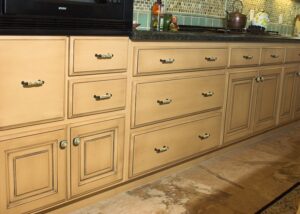 Overall you’re happy with your kitchen - but it’s needs… something. Your designer tells you all it needs is a change of cabinet hardware and you like that idea. After all, it’s a difference without the hassle and time of a major remodel.
Overall you’re happy with your kitchen - but it’s needs… something. Your designer tells you all it needs is a change of cabinet hardware and you like that idea. After all, it’s a difference without the hassle and time of a major remodel.
But be careful.
If it sounds too easy, it usually is. That’s not to say it can’t be done. It’s just that one of the trickiest parts of kitchen design is to coordinate the hardware with the rest of the room. Jump in without a plan and you could end up with a mess. Here’s what to consider before you take anything apart.
Old knobs and cup pulls are easily replaced with new ones. However C and D-shaped hardware, favored by Universal Design, comes in different widths; and this is one time when bigger is better. Unfortunately, you can’t replace a five-inch handle with a seven-inch without leaving a hole.
Or suppose you find a handle shape you really love and want to use it throughout the kitchen. It may take two to three coordinating styles to address the different sizes and shapes of your cabinetry.
Placing knobs or cup pulls on cabinets and drawers near the sink can be counterproductive. This is where your hands are most likely to be wet or dirty. If your handles are small, require grasping or have a squeeze mechanism, it takes more effort to get them open. If this type of hardware is already in place, take the opportunity to change the drawer and door fronts to install hardware that’s larger and easier to use.
Finally, in order to maintain elegance and consistency, don’t forget other metal surfaces like faucets and appliance handles. How well will your new hardware tie in with them?
They say “the Devil is in the details” and kitchen hardware is no exception. It takes careful consideration to determine what type of hardware gives you the update you seek without sacrificing function and visual consistency.

